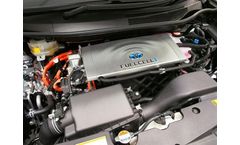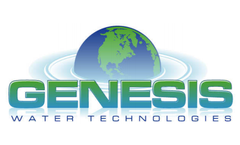Refine by
Proton Exchange Membrane Articles & Analysis
19 articles found
Hydrogen (H2) production is pivotal in the global shift towards a net-zero carbon economy. Its elemental abundance and zero-emission combustion position it as an ideal renewable energy source. However, the journey to harness hydrogen’s full potential is fraught with challenges, particularly in storage and transportation. Researching viable hydrogen carriers is critical, as conventional ...
As the world intensifies its focus on green hydrogen production, a critical factor that often goes unnoticed is water treatment. The process of producing hydrogen through electrolysis involves complex chemical reactions and precise atomic calculations, making water treatment an essential part of the equation. In this article, we will discuss how understanding the atomic composition of water can ...
As the world intensifies its focus on green hydrogen production, a critical factor that often goes unnoticed is water treatment. The process of producing hydrogen through electrolysis involves complex chemical reactions and precise atomic calculations, making water treatment an essential part of the equation. In this article, we will discuss how understanding the atomic composition of water can ...
The gas purifier was confirmed to be capable of removing the residual NH3 for a proton exchange membrane fuel cell (PEMFC). The fuel cell, when powered by the cracked and purified gas mixture, revealed comparable performance and power output as compared with the pre-mixed fuel gas mixture (75%H2/25%N2), demonstrating the feasibility of the whole ...
What are Fuel Cells? Fuel cells use the chemical energy of hydrogen or an alternative fuel to cleanly and efficiently produce electricity. Using hydrogen as the fuel only produces water, heat, and electricity. Hydrogen (the fuel) is supplied continuously, unlike in a battery, and a dynamic equilibrium is maintained. ...
Abstract In the present work, carbon nanotubes (CNT) and CNT-carbon nanohorns (CNH) (0, 30, 50, 70 and 100 wt.% CNH) composite Buckypapers (BPs) were fabricated using vacuum filtration technique. Structure and property relation of composite BPs were studied using scanning electron microscope, four probe technique, BET surface area and contact angle measurements. Properties such as electrical ...
BySusChem
Proton exchange membrane fuel cells (PEMFCs) have been widely studied and discussed in the field of energy owing to their high energy efficiency and low waste emissions. ...
Sulfonated Poly(ether ether ketone) (SPEEK) and its composites are explored as potential alternatives for Nafion in fuel cell applications. In this work, we investigate the effects of the silica functionalisation route on the thermal, mechanical and structural properties of SPEEK-Silica composite membranes. We compare two different methods – direct sulfonation and ...
Many Hydrogen generators utilize proton exchange membranes (PEM) coupled with a hydrogen purification systems such as Palladium-diffusion or Pressure Swing Adsorption (PSA). ...
Here were look at the various methods used to purify hydrogen. Three using PEM (Proton Exchange Membrane), combined with various purification techniques, and the fourth using a combined Palladium Electrolyser. PEM/Palladium Diffusion Palladium membrane hydrogen purifiers operate via pressure driven diffusion across palladium ...
Platinum catalysts are a core component of proton exchange membrane fuel cells (PEMFC), a widely used hydrogen fuel-cell type for powering cars and stationary applications such as lights and telecommunication towers. ...
The catalyst films reveal high catalytic activity as anode catalyst in proton exchange membrane fuel cells. Preparation of nanoporous structures by sputtering shows that this technique is suitable for preparation of catalyst for micro fuel cell systems made by planar technology.Keywords: XPS, SEM, carbon nanotubes, CNTs, platinum, cerium oxide, ...
A membrane electrode assembly (MEA) for microbial fuel cells (MEA-MFC) was developed for continuous electricity production while treating domestic wastewater concurrently. ...
Membrane electrode assemblies are the key components of proton exchange membrane fuel cells. ...
The goal of the present study is the development and comparative characterisation of carbon-supported and nanostructured Pd- and Pt-based electrocatalysts for hydrogen oxidation in Proton Exchange Membrane (PEM) H2/O2(air) fuel cells and proton reduction in PEM water electrolysers. ...
The chlor-alkali industry, one of the largest chemical industries in India and growing at an annual rate of 3.3%, is expected to grow along with the growing Indian economy. This MW size proton-exchange membrane (PEM) fuel cell product captures hydrogen produced in the chlor-alkali industry to create on site electricity and provide plant operators ...
This paper presents the thermodynamic modelling of a proton exchange membrane (PEM) fuel cell at various operating conditions through energy and exergy analyses. ...
Fuel cells are widely recognised as a technology of the future and as a potential replacement for the internal combustion engine in cars and other vehicles.This article looks at the potential for fuel cells to provide auxiliary power to vehicles, rather than primary motive power. Today, hydrogen-fuelled proton exchange membrane (PEM) ...
In London, Brent crude also rose $1.24 (3.4%) to $37.75 a barrel on the International Petroleum Exchange. But some of the questions we have for hybrid technology are now dependability in cold weather starting, reliability in highway driving standards, added to these ever so alluring fuel cost savings. ...












